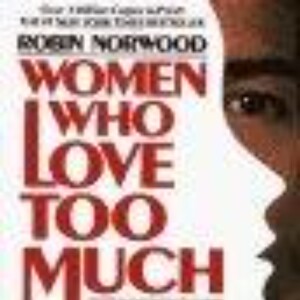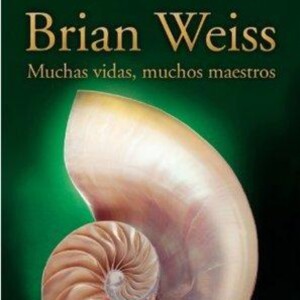Episodes

Wednesday Feb 26, 2025
Wednesday Feb 26, 2025
1 What's A Gentle Reminder
"A Gentle Reminder" by Bianca Sparacino is a reflective collection of poems that emphasizes self-love, resilience, and healing. The book encourages readers to embrace their worth, confront emotional struggles, and find solace in understanding their experiences. Through poignant language and relatable themes, Sparacino offers gentle reassurances, reminding readers of their strength and the importance of nurturing their mental and emotional well-being while navigating the complexities of life and relationships.
2 Key Concepts of A Gentle Reminder
In "A Gentle Reminder" by Bianca Sparacino, the theme introduced in Chapter 1—self-acceptance and the importance of recognizing one’s worth—resonates throughout several chapters. Specifically, Chapters 2, 5, and 10 delve deeper into the journey of embracing one’s individuality and understanding that flaws do not define one’s value. These chapters provide poignant insights and affirmations that encourage readers to cultivate self-love and resilience, reinforcing the foundational ideas presented in the opening chapter.
3 In-Depth Chapter Analysis of A Gentle Reminder by Bianca Sparacino
In "A Gentle Reminder" by Bianca Sparacino, the chapters collectively intertwine themes of self-love, healing, and resilience. For instance, in Chapter 2, the focus on accepting one's imperfections highlights the importance of self-acceptance as a vital step in personal growth. Sparacino encourages readers to embrace their flaws by presenting relatable scenarios that foster a sense of comfort and understanding. This chapter resonates deeply with the overarching theme of recognizing one’s worth and acknowledging that it is not diminished by imperfections.
Conversely, Chapter 6 delves into the concept of forging connections and the significance of nurturing relationships as part of the healing journey. Sparacino illustrates how supportive bonds can facilitate personal growth, evidenced by intimate anecdotes that evoke a sense of belonging and understanding. This chapter emphasizes that while the journey of self-discovery can be solitary at times, it is the connections we cultivate that enrich our lives and reinforce our self-worth. Together, these chapters reveal a profound exploration of the interplay between inner strength and the importance of community, reinforcing the overarching message of embracing oneself while valuing the ties that uplift us.
Book https://www.bookey.app/book/a-gentle-reminder
Quotes https://www.bookey.app/quote-book/a-gentle-reminder
YouTuBe https://www.youtube.com/watch?v=Z44c5fUKe14
Amazon https://www.amazon.com/Gentle-Reminder-Bianca-Sparacino/dp/1949759296
Goodreads https://www.goodreads.com/book/show/57393737-a-gentle-reminder

Tuesday Feb 25, 2025
Tuesday Feb 25, 2025
1 What's Living with a SEAL
"Living with a SEAL" by Jesse Itzler explores the transformative journey of the author as he invites a former Navy SEAL, David Goggins, to live with him for a month. The book intertwines humor and self-discovery as Itzler shares his experiences facing physical and mental challenges that push him beyond his limits. Through rigorous training, lessons on discipline, and Goggins' relentless mindset, Itzler learns valuable insights about resilience, grit, and the importance of stepping outside one's comfort zone to achieve personal growth and a stronger sense of self.
2 Key Concepts of Living with a SEAL
In "Living with a SEAL," the theme of pushing beyond your limits, introduced in Chapter 1, is reflected in various subsequent chapters where the author, Jesse Itzler, recounts his intense physical and mental challenges alongside the Navy SEAL, David Goggins. Specifically, Chapters 3 and 5 emphasize rigorous training sessions that test Jesse's endurance and resilience, illustrating the profound discomfort that leads to personal growth. Additionally, Chapter 8 captures the essence of facing fears head-on, reinforcing the idea that true transformation occurs outside one's comfort zone. Overall, the journey throughout the book serves to amplify this core theme of exceeding self-imposed boundaries.
3 In-Depth Chapter Analysis of Living with a SEAL by Jesse Itzler
In "Living with a SEAL," Jesse Itzler chronicles his transformative experience of living with a former Navy SEAL for a month to push his physical and mental limits. One of the standout chapters highlights the grueling training sessions that underscore the theme of discomfort leading to growth. In a particularly memorable chapter, Itzler describes a morning workout that starts before dawn, where he is pushed to run long distances and endure intense exercises. This chapter captures the essence of resilience; Itzler learns to embrace pain and exhaustion, recognizing that true growth often comes from stepping outside one's comfort zone. The relentless dedication of the SEAL serves as a powerful metaphor for overcoming life’s obstacles and challenges.
Another pivotal chapter delves into the concept of mindset and the importance of mental toughness. Itzler reflects on a day when his motivation wanes, and he grapples with feelings of self-doubt. The SEAL’s responses and encouragement highlight the crucial role of mental discipline in achieving one’s goals. Through practical exercises and motivational dialogues, this chapter illustrates the book’s broader theme of perseverance—demonstrating that success is not merely a product of physical capability but also of mental resolve. By the end of his month with the SEAL, Itzler emerges not only physically stronger but also equipped with newfound mental fortitude, embodying the book's core message that greatness is forged through overcoming adversity and embracing the grind.
Book https://www.bookey.app/book/living-with-a-seal
Author https://www.bookey.app/quote-author/jesse-itzler
Quotes https://www.bookey.app/quote-book/living-with-a-seal
YouTuBe https://www.youtube.com/watch?v=0BjTe51-l-k
Amazon https://www.amazon.com/Living-SEAL-Training-Toughest-Planet-ebook/dp/B00U6DNZB2
Goodreads https://www.goodreads.com/book/show/25066990-living-with-a-seal

Monday Feb 24, 2025
Monday Feb 24, 2025
1 What's Bad Mormon
"Bad Mormon" by Heather Gay is a candid memoir that explores the author's complex relationship with her upbringing in the Mormon Church and her journey of self-discovery after leaving the faith. Through a mix of humor and vulnerability, Gay recounts her experiences growing up in a strict religious environment, the struggle to conform to its expectations, and the challenges of embracing her identity outside of it. The book delves into themes of faith, familial ties, and the quest for authenticity, as Gay navigates life as a "bad Mormon," embracing her flaws and celebrating her independence.
2 Key Concepts of Bad Mormon
In "Bad Mormon," the theme introduced in Chapter 1 revolves around the struggle between personal identity and the expectations of a religious upbringing. This theme resonates throughout several chapters, particularly in Chapter 3, where the author explores her experiences within the confines of her faith and the pressures to conform. Additionally, Chapter 5 delves into her rejection of certain doctrines, highlighting her journey toward self-acceptance and the challenges that arise from defying traditional beliefs. Together, these chapters illustrate the ongoing internal conflict and desire for authenticity amidst the influences of her Mormon background.
3 In-Depth Chapter Analysis of Bad Mormon by Heather Gay
In "Bad Mormon," Heather Gay navigates her complex relationship with her faith and the cultural expectations of the Church of Jesus Christ of Latter-day Saints. One key chapter focuses on her experiences surrounding her baptism and subsequent disillusionment with the church's teachings. This chapter highlights the theme of identity and the struggle between personal truth and societal norms. Gay poignantly describes the pressures to conform to the church's ideals while grappling with her own beliefs. Her recounting of the conflicting messages she received about morality and worthiness underscores the internal battle many face when reconciling deeply held values with institutional expectations.
Another pivotal chapter delves into Gay's experiences during the church's strict adherence to traditional gender roles, specifically in relation to her marriage and motherhood. This chapter reinforces the theme of empowerment versus subjugation, illustrating how the church's views can often overshadow individual aspirations. Through her candid reflections on navigating motherhood within these confines, Gay illuminates the weight of expectations placed on women, leading to feelings of guilt and resentment. By sharing her journey of reclaiming her narrative—embracing her flaws and rejecting the notion of being a "perfect" Mormon—Gay fosters a dialogue about self-acceptance and the importance of personal choice, making her story relatable to anyone grappling with their identity in the face of societal norms.
Book https://www.bookey.app/book/bad-mormon
YouTuBe https://www.youtube.com/watch?v=H-CDscz1HWY
Amazon https://www.amazon.com/Bad-Mormon-Heather-Gay/dp/1982199539
Goodreads https://www.goodreads.com/book/show/59345245-bad-mormon

Friday Feb 21, 2025
Friday Feb 21, 2025
1 What's Prescription For Nutritional Healing
"Prescription for Nutritional Healing" by Phyllis A. Balch focuses on the importance of nutrition and dietary supplements in promoting overall health and managing various illnesses. The book serves as a comprehensive guide to natural healing, offering detailed insights into specific nutrients, herbs, and dietary practices that can aid in the prevention and treatment of health conditions. It emphasizes a holistic approach to wellness, exploring the connections between diet, lifestyle, and health outcomes while providing practical advice for readers seeking to improve their well-being through nutritional interventions.
2 Key Concepts of Prescription For Nutritional Healing
In "Prescription for Nutritional Healing," the theme introduced in Chapter 1 revolves around the importance of nutrition in promoting health and preventing disease. Subsequent chapters that relate strongly to this theme include those focusing on specific nutritional approaches for various health conditions, such as Chapter 3 on vitamins and minerals, which outlines their roles in bodily functions; Chapter 4 on dietary guidelines that emphasize holistic dietary choices; and Chapters 5 to 11, which cover specific diseases and the corresponding nutritional strategies that can support recovery or management. Together, these chapters reinforce the foundational idea that nutrition is a key element in maintaining overall health and well-being.
3 In-Depth Chapter Analysis of Prescription For Nutritional Healing by Phyllis A. Balch
"Prescription for Nutritional Healing" by Phyllis A. Balch is structured to emphasize the connection between nutrition and health, systematically addressing various health conditions alongside nutritional strategies for prevention and healing. Each chapter focuses on specific health issues—ranging from common ailments like allergies and arthritis to more serious conditions like cancer and heart disease. For instance, in the chapter on cardiovascular health, Balch discusses the importance of omega-3 fatty acids and their role in lowering cholesterol and reducing inflammation. This aligns with the overarching theme of the book, which is the power of nutrition in maintaining and restoring health.
Moreover, Balch incorporates detailed dietary recommendations, herbal supplements, and lifestyle changes pertinent to each ailment discussed. The chapter on digestive health, for example, highlights probiotics and their benefits for gut flora balance, promoting improved digestion and immunity. This connection underscores the book’s core principle that nutritional choices can profoundly affect physical well-being. By providing both preventative measures and specific dietary prescriptions tailored to various health challenges, Balch fosters an understanding of how holistic nutrition can empower individuals in their health journeys.
Book https://www.bookey.app/book/prescription-for-nutritional-healing
Quotes https://www.bookey.app/quote-book/prescription-for-nutritional-healing
YouTuBe https://www.youtube.com/watch?v=VZbfGU9K1bw
Amazon https://www.amazon.com/Prescription-Nutritional-Healing-Fifth-Practical/dp/1583334009
Goodreads https://www.goodreads.com/book/show/170844.Prescription_for_Nutritional_Healing

Thursday Feb 20, 2025
Thursday Feb 20, 2025
1 What's Chasing Lincoln's Killer
"Chasing Lincoln's Killer" by James L. Swanson explores the dramatic and intense pursuit of John Wilkes Booth, the assassin of President Abraham Lincoln, following the assassination on April 14, 1865. The narrative intertwines historical events with the personal stories of those involved, including Booth's escape through Southern Maryland and Virginia, the determination of Union soldiers and detectives to capture him, and the broader societal impacts of the assassination. Swanson's engaging retelling highlights themes of justice, the complexities of post-Civil War America, and the relentless nature of law enforcement as they work against time to bring Booth to justice.
2 Key Concepts of Chasing Lincoln's Killer
In "Chasing Lincoln's Killer," the theme of justice and the pursuit of accountability resonates throughout the narrative, especially in chapters that detail the manhunt for John Wilkes Booth and his accomplices. Specifically, Chapter 2, which outlines the immediate response to Lincoln's assassination, highlights the urgency and resolve of law enforcement to bring Booth to justice. Similarly, Chapter 5, where the pursuit intensifies across various states, underscores the determination of the authorities and civilians alike to ensure that Booth faces the consequences of his actions, reinforcing the idea that justice must be served following such a monumental crime. These chapters collectively illustrate the relentless quest for justice that underpins the entire story.
3 In-Depth Chapter Analysis of Chasing Lincoln's Killer by James L. Swanson
In "Chasing Lincoln's Killer," James L. Swanson intricately weaves a narrative that follows the assassination of President Abraham Lincoln and the subsequent manhunt for John Wilkes Booth. Each chapter encapsulates a crucial moment in this dramatic historical account, collectively underscoring themes of justice, loyalty, and the impact of violence. For instance, in the chapters detailing Booth's escape, Swanson highlights both the desperation and determination of the assassin, showcasing how his initial plan rapidly devolved into chaos. The juxtaposition of Booth's fervent allegiance to the Confederate cause with the moral implications of his actions accentuates the psychological conflict faced by many during this tumultuous period in American history.
As the chapters unfold, the relentless pursuit by law enforcement, especially the role of the soldiers and detectives, emphasizes the theme of justice. The meticulous details regarding their investigation, such as the use of telegraphs and informants, illustrate the era's technological limitations and the tenacity of those seeking to bring Booth to justice. Furthermore, the narrative explores the broader ramifications of Lincoln's assassination, reflecting the national trauma and division caused by the Civil War. By weaving together personal accounts, historical context, and dramatic tension, Swanson not only recounts a gripping tale but also invites readers to ponder the moral complexities surrounding loyalty and justice during a critical juncture in American history.
Book https://www.bookey.app/book/chasing-lincoln%27s-killer
Quotes https://www.bookey.app/quote-book/chasing-lincoln%27s-killer
YouTuBe https://www.youtube.com/watch?v=-01SaFyIV0Y
Amazon https://www.amazon.com/Chasing-Lincolns-Killer-James-Swanson/dp/0439903548
Goodreads https://www.goodreads.com/book/show/3790380-chasing-lincoln-s-killer

Wednesday Feb 19, 2025
Wednesday Feb 19, 2025
1 What's Wreck This Journal
"Wreck This Journal" by Keri Smith is an interactive creativity book designed to encourage self-expression and exploration through unconventional prompts that invite users to destroy, alter, and engage with the journal in unique ways. The overall theme revolves around the liberation of creativity by embracing imperfections and breaking societal norms around art and self-discipline. Each page offers playful challenges—such as spilling something, drawing with your eyes closed, or creating a mess—that promote a sense of freedom and spontaneity, ultimately encouraging the reader to let go of fear and perfectionism in their creative endeavors.
2 Key Concepts of Wreck This Journal
In "Wreck This Journal" by Keri Smith, Chapter 1 introduces the theme of embracing imperfection and the beauty of destruction in creativity. This theme resonates throughout various chapters, particularly in Chapter 5, where the reader is encouraged to "Fill this page with circles," promoting a free-form and non-judgmental approach to art. Similarly, Chapter 10 invites users to "Put something in the envelope," encouraging the inclusion of found objects that may be imperfect or random, further emphasizing creativity as an exploration rather than a perfectionist endeavor. These chapters collectively reinforce the journal's central message of letting go of control and celebrating the process of creating.
3 In-Depth Chapter Analysis of Wreck This Journal by Keri Smith
"Wreck This Journal" by Keri Smith is a unique interactive guide that encourages readers to break free from conventional norms of creativity and self-expression. Each chapter presents a different task aimed at liberating the user from the fear of making mistakes. For instance, one chapter instructs readers to "drop the journal from a height," inviting them to embrace chaos and the unpredictable outcomes it brings. This task symbolizes the liberation found in allowing imperfections and accidents to contribute to the artistic process, highlighting the theme of embracing spontaneity and imperfection in creativity.
Another chapter prompts users to "draw and create on the pages using their feet," pushing the boundaries of conventional thinking about art-making. This surreal approach to creating art not only challenges social expectations but also emphasizes the idea that creativity knows no limits; it can be playful and derived from everyday scenarios. Throughout the journal, Smith connects these whimsical tasks to the deeper message that creativity flourishes in freedom, experimentation, and the willingness to embrace one's own unique quirks and mistakes, fostering a more profound connection with oneself and the process of creation.
Book https://www.bookey.app/book/wreck-this-journal
Author https://www.bookey.app/quote-author/keri-smith
Quotes https://www.bookey.app/quote-book/wreck-this-journal
YouTuBe https://www.youtube.com/watch?v=74yr5kHN71I
Amazon https://www.amazon.com/Wreck-This-Journal-Keri-Smith/dp/039953346X
Goodreads https://www.goodreads.com/book/show/428862.Wreck_This_Journal

Tuesday Feb 18, 2025
Tuesday Feb 18, 2025
1 What's Chicken Soup for the Teenage Soul
"Chicken Soup for the Teenage Soul," edited by Jack Canfield, is a collection of inspirational stories, essays, and poems that resonate with the challenges and experiences of adolescence. The overall theme centers around empowerment, self-discovery, and the emotional struggles faced during the teenage years, such as friendships, love, loss, and personal growth. Through relatable anecdotes and heartfelt narratives, the book aims to provide comfort, encouragement, and a sense of connection for teens navigating the complexities of their formative years, ultimately fostering resilience and hope.
2 Key Concepts of Chicken Soup for the Teenage Soul
In "Chicken Soup for the Teenage Soul," Chapter 1 focuses on the theme of identity and self-discovery. This theme resonates throughout various chapters, particularly in chapters that discuss friendship and the challenges of growing up. For example, Chapter 2, which deals with the importance of genuine friendships, highlights how relationships can shape one's sense of self. Similarly, Chapter 5, which reflects on overcoming obstacles, reinforces the idea that experiences and challenges contribute to personal growth and understanding of identity. Together, these chapters emphasize the journey of finding oneself during the tumultuous teenage years.
3 In-Depth Chapter Analysis of Chicken Soup for the Teenage Soul by Jack Canfield
"Chicken Soup for the Teenage Soul," edited by Jack Canfield, is an anthology that offers a collection of inspiring and relatable stories aimed at teenagers, touching on the myriad challenges and experiences they face. Each chapter typically focuses on a particular theme central to adolescent life, such as friendship, love, family, and overcoming obstacles. For instance, the chapter on "Friendship" features heartfelt anecdotes that emphasize the importance of supportive relationships during the tumultuous teenage years. One story might recount a profound experience where a friend's unwavering support helped a teen navigate the trials of adolescence, showcasing the vital role of connection and camaraderie during this formative period.
Another significant chapter might focus on "Self-Discovery," where stories illustrate the journeys of young individuals as they explore their identities and passions. These narratives often highlight pivotal moments—such as a young musician overcoming stage fright or an athlete pushing through self-doubt—that resonate deeply with readers. For example, a story could detail how a teen's pursuit of a hobby led to newfound confidence and self-awareness, reinforcing the theme of personal growth that is prevalent throughout the collection. Collectively, these chapters create a tapestry of experiences that encourage teens to embrace their uniqueness and navigate the challenges of growing up with resilience and hope.
Book https://www.bookey.app/book/chicken-soup-for-the-teenage-soul-by-ed-canfield%2C-jack
Arthor https://www.bookey.app/quote-author/jack-canfield
Quotes https://www.bookey.app/quote-book/chicken-soup-for-the-teenage-soul
YouTuBe https://www.youtube.com/watch?v=39-PLQ1mOSU
Amazon https://www.amazon.com/Chicken-Soup-Teenage-Soul-Learning/dp/1558744630
Goodreads https://www.goodreads.com/series/343308-chicken-soup-for-the-teenage-soul

Monday Feb 17, 2025
Monday Feb 17, 2025
1 What's Women Who Love Too Much
"Women Who Love Too Much" by Robin Norwood explores the complexities of women's emotional relationships, particularly with men who are emotionally unavailable or problematic. The book delves into the psychological patterns that drive women to seek love in unhealthy ways, often leading to cycles of disappointment and pain. Norwood combines personal anecdotes, case studies, and practical advice to help women recognize these patterns, understand their roots, and ultimately break free from destructive relationships. The overarching theme emphasizes the importance of self-love, personal empowerment, and the need to establish healthier dynamics in relationships.
2 Key Concepts of Women Who Love Too Much
In "Women Who Love Too Much," Chapter 1 introduces the theme of emotional dependency and the struggles women face in unhealthy relationships. This theme is further explored in several chapters, particularly in Chapter 3, where the concept of seeking love as validation is discussed, and Chapter 5, which delves into the patterns of self-sacrifice and loss of identity in relationships. Additionally, Chapter 7 addresses the cycle of attraction to unavailable partners, reinforcing the emotional entanglements that are at the core of the book's exploration of love and dependence. Each of these chapters contributes to a deeper understanding of the dynamics that lead to unhealthy romantic attachments.
3 In-Depth Chapter Analysis of Women Who Love Too Much by Robin Norwood
In "Women Who Love Too Much," Robin Norwood delves into the complexities of women's relationships with emotionally unavailable or addicted partners. One of the pivotal chapters, “The Longing,” explores the deep-seated desires for love that often drive women to stay in unhealthy relationships. Norwood illustrates how these women often mistake intensity for love, often reflecting on their past traumas, such as childhood neglect or trauma. For instance, she discusses women who have subconsciously chosen partners who reflect their unresolved issues, perpetuating a cycle of unfulfilling love, thereby reinforcing the theme of emotional dependency and the struggle for self-worth.
Another significant chapter, “The Cycle of Addiction,” connects directly to the theme of breaking free from dysfunctional patterns. In this chapter, Norwood presents specific case studies of women who realize that their love often comes at the expense of their mental and emotional health. By highlighting their experiences of feeling trapped in relationships with addicts or codependent partners, Norwood emphasizes the importance of self-awareness and healing. Throughout this chapter, she encourages women to confront their fears and redefine love in healthier terms, aligning with the overarching message that true love should nurture rather than deplete one's spirit. This profound redirection towards self-love and awareness serves as a guiding principle for breaking the cycle of unhealthy attachments.
Book https://www.bookey.app/book/women-who-love-too-much
Quotes https://www.bookey.app/quote-book/women-who-love-too-much
YouTuBe https://www.youtube.com/watch?v=NXzs_cOpRjE
Amazon https://www.amazon.com/Women-Who-Love-Too-Much/dp/1416550216
Goodreads https://www.goodreads.com/book/show/239509.Women_Who_Love_Too_Much

Friday Feb 14, 2025
Friday Feb 14, 2025
1 What's Muchas Vidas, Muchos Maestros
"Muchas Vidas, Muchos Maestros" by Brian L. Weiss explores the concept of reincarnation and the impact of past life experiences on current life issues. Through his work as a psychiatrist, Weiss shares his journey of uncovering his patients' past lives during hypnotherapy sessions, revealing how these experiences can provide insights into their present struggles, relationships, and emotional healing. The book emphasizes the interconnectedness of all lives, the lessons learned across multiple incarnations, and the transformative power of understanding one's past to achieve spiritual growth and self-awareness.
2 Key Concepts of Muchas Vidas, Muchos Maestros
In "Muchas Vidas, Muchos Maestros," the theme introduced in Chapter 1 revolves around the exploration of past lives and their influences on the present. Subsequent chapters, particularly Chapter 2 and Chapter 9, further delve into the concept of reincarnation and the lessons learned from previous existences. In Chapter 2, Dr. Brian Weiss recounts specific patient sessions that illustrate how past traumas can affect current behavior. Chapter 9 emphasizes the idea of spiritual growth through multiple lifetimes, reinforcing the notion that understanding our past can lead to healing and personal development. These chapters collectively build upon the foundational theme established in the first chapter, highlighting the interconnectedness of our past and present selves.
3 In-Depth Chapter Analysis of Muchas Vidas, Muchos Maestros by Brian L. Weiss
In "Muchas Vidas, Muchos Maestros," Brian L. Weiss explores the themes of reincarnation, healing, and the interconnectedness of life through the stories presented in various chapters. The early chapters introduce Weiss's patient, Catherine, whose regression therapy reveals past life experiences that resonate with her current struggles, illustrating how unresolved issues can transcend lifetimes. For example, in Chapter 2, Weiss recounts Catherine's experiences in ancient Egypt, highlighting how traumatic events in past lives manifest as psychological barriers in her present life. This connection underscores the book's central theme of the impact of past lives on present healing.
As the narrative unfolds, subsequent chapters delve deeper into the spiritual lessons gleaned from these past life experiences. Chapter 5 emphasizes the idea of spiritual growth, as Catherine learns valuable insights about love, forgiveness, and the essence of the soul's journey. The revelations about karma and personal responsibility in this chapter serve to reinforce the theme of interconnectedness, suggesting that our choices in one life affect the next. Throughout "Muchas Vidas, Muchos Maestros," Weiss adeptly weaves personal narratives and insights that encourage readers to reflect on their own lives, fostering a deeper understanding of their spiritual evolution and the timeless nature of the soul.
Book https://www.bookey.app/book/muchas-vidas%2C-muchos-maestros
Author https://www.bookey.app/quote-author/brian-l.-weiss
Quotes https://www.bookey.app/quote-book/muchas-vidas%2C-muchos-maestros
YouTuBe https://www.youtube.com/watch?v=NUIDxWGeO4w
Amazon https://www.amazon.com/Muchas-muchos-maestros-Masters-Spanish/dp/1947783416
Goodreads https://www.goodreads.com/book/show/38814435

Thursday Feb 13, 2025
Thursday Feb 13, 2025
1 What's The Devil And Sherlock Holmes
"The Devil and Sherlock Holmes" by David Grann explores the intersection of obsession, mystery, and the human psyche through a collection of true stories that revolve around Sherlock Holmes and his creator, Arthur Conan Doyle. The book delves into the enigmatic figures that have been influenced by Holmes, including a tragic case involving a real-life murder that draws parallels with Doyle’s fictional detective. Grann skillfully weaves together historical accounts and literary analysis, examining themes of illusion, the search for truth, and the darker aspects of human nature, ultimately inviting readers to contemplate the fine line between reality and fiction.
2 Key Concepts of The Devil And Sherlock Holmes
In "The Devil and Sherlock Holmes," the theme of the duality of human nature and the complex interplay between good and evil is prevalent throughout several chapters. Chapter 1, which focuses on the enigmatic life and death of Holmes's creator, Arthur Conan Doyle, sets the tone for this exploration. Subsequent chapters, such as "The Adventure of the Sussex Vampire," delve into the darker aspects of human motivations and the moral ambiguities inherent in both criminals and detectives. Additionally, "The Devil and Sherlock Holmes" itself highlights the unsettling contradictions within the characters and their actions, further emphasizing the theme of duality and the often blurred lines between heroism and villainy.
3 In-Depth Chapter Analysis of The Devil And Sherlock Holmes by David Grann
"The Devil and Sherlock Holmes: Tales of Murder, Madness, and Obsession" by David Grann intertwines true crime narratives with a look at the enigmatic figure of Sherlock Holmes, revealing the darker side of obsession and the quest for truth. Each chapter explores themes of obsession and the fine line between brilliance and madness. For instance, in the opening chapter, “Mysterious Circumstances,” Grann investigates the death of Richard Lancelyn Green, a fervent Holmes aficionado whose life became consumed by his obsession. This chapter not only delves into the intricate relationship between reality and fiction but also highlights how obsession can lead to tragic consequences, mirroring the complexities often found in Arthur Conan Doyle’s own characters.
Another profound chapter, “The Devil and Sherlock Holmes,” examines the life and death of Holmes's creator, Arthur Conan Doyle, and his later fascination with spiritualism. This chapter showcases the theme of delusion and the human need to find answers beyond the rational. As Grann uncovers Doyle's later life, the contrast between his celebrated literary legacy and his yearning for the supernatural illustrates how even the most rational minds can be ensnared by their own obsessions. Together, these chapters reflect the overarching theme of the collection: the perils of obsession, whether in the pursuit of truth, the quest for understanding, or the need to reconcile myths with reality.
Book https://www.bookey.app/book/the-devil-and-sherlock-holmes
Author https://www.bookey.app/quote-author/david-grann
YouTuBe https://www.youtube.com/watch?v=N86Weh8RlWk
Amazon https://www.amazon.com/Devil-Sherlock-Holmes-Madness-Obsession/dp/0307275906
Goodreads https://www.goodreads.com/book/show/7150397-the-devil-sherlock-holmes








